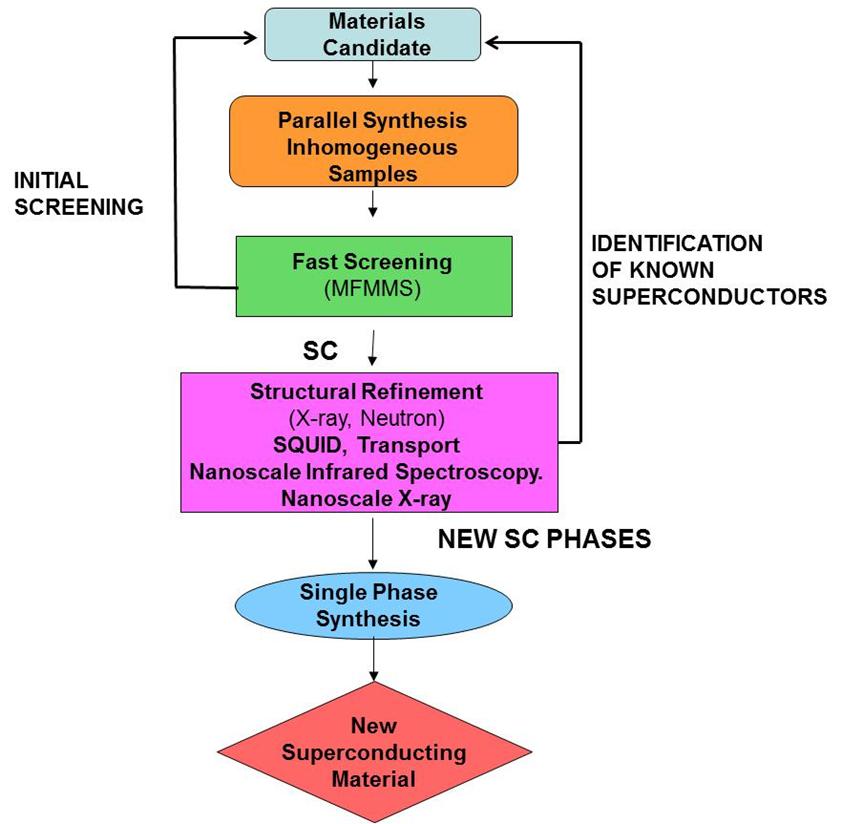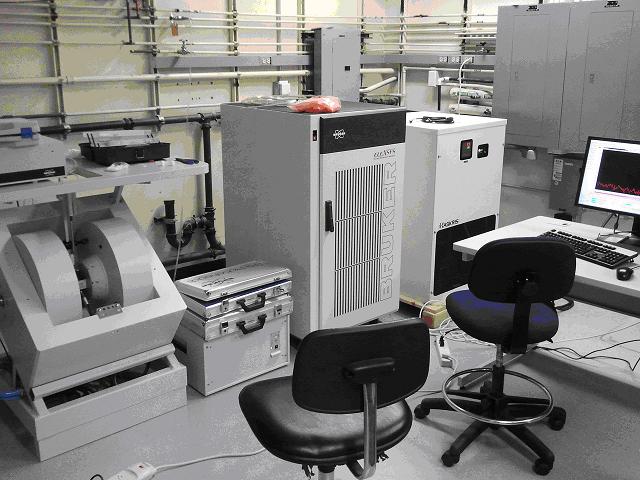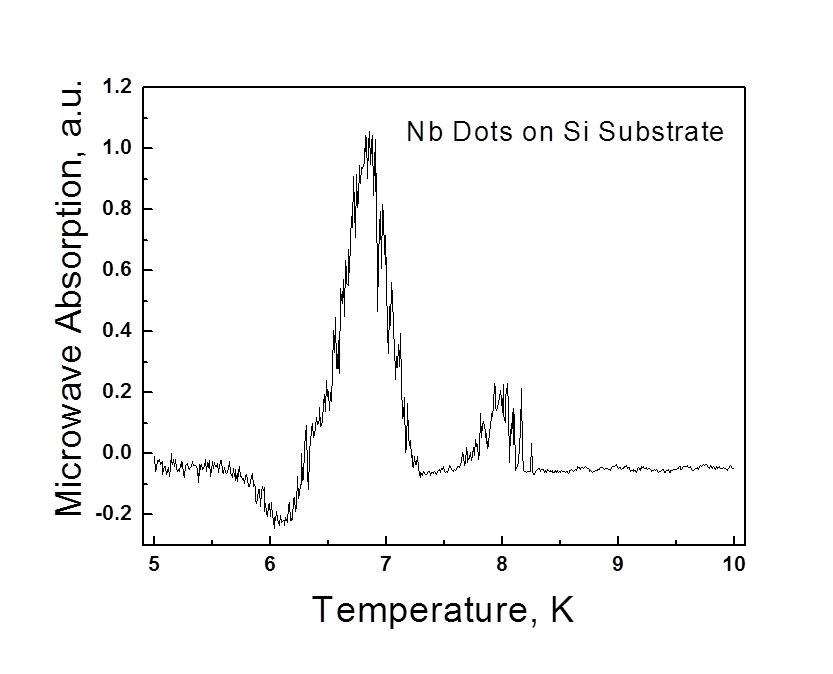The Search for New Superconductors – Synthetic Materials
The search for materials with novel properties, new superconductors in particular, is a difficult and sometimes tedious task. It is difficult because a deliberate search for new superconducting materials in a particular system is rarely successful. As a consequence, the discovery of these new materials has been mostly accidental since the discovery of the phenomenon. Moreover this is a tedious task because the systems under study are usually materials consisting of several elements with complex phase diagrams. The interesting novel superconducting properties generally occur in a very narrow phase diagram region where superconducting and non-superconducting phases are likely to coexist. In some ways, the search for new materials is akin to the search for a needle in a haystack in which most of the material is irrelevant.

Figure 1. Block diagram of the methodology used for searching for new SC.

Figure 2. MFMMS at UCSD
Based on the past history of discoveries in superconductivity clearly some novel unconventional ideas are needed. Our method, [1] explained in the flow chart (figure 1), consists of a fast process for discarding most of the non-superconducting part of a multinary phase diagram. This is done first by the preparation of highly inhomogeneous samples, either via powder metallurgy or via sputtering phase spread alloys.
We characterize these samples with a fast, sensitive screening using Magnetic Field Modulated Microwave Spectroscopy (MFMMS) [1,2,3] (figures 2 and 3). Once a sample containing a superconducting phase is identified, comprehensive and quantitative structural, transport and magnetic methods are applied to identify the phase responsible for the superconductivity. The system is open for giving service to any research group interested.

Figure 3. MFMMS detection of SC volumes as low as 10-12 cm3.

[2] D. Lederman D et al., Appl. Phys. Lett. 66, 3677 (1995)
[3] B. Knigge et al., J. Appl. Phys. 81, 2291 (1997)
